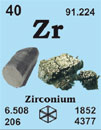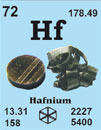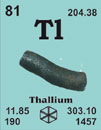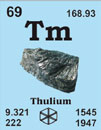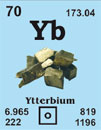Indium 49In114.82
Indium was discovered in 1863 by Ferdinand Reich and Hieronymous Richter at Freiberg, Germany.
[Named after the indigo line in its spectrum]
French: indium
German: indium
Italian: indio
Spanish: indio
Description: Indium is a soft, silvery-white metal, and has one of the longest liquid range of all the elements. It is stalbe in air and with water; it dissolves in acids. Indium is used in low-melting alloys in safety devices. Indium arsenide and indium antomonide have uses in transistors and thermistors.
Indium single crystal properties
| State: |
single crystal |
|---|
| Crystal structure: |
tetragonal |
|---|
| Production method: |
Bridgeman |
|---|
| Standard size: |
diameter 7mm
thickness 3mm |
|---|
| Orientation: |
(001) |
|---|
| Orientation accuracy: |
<2°, <1°, <0.4° or <0.1° |
|---|
| Polishing: |
as cut, <0.1µm |
|---|
| Roughness of surface: |
|
|---|
| Purity: |
99.9999% |
|---|
| Typical analysis (ppm): |
C 3
H < 1
O 9
N < 5
Cu 1.60
Fe 1.80
Ni < 1
Pb 0.30
Si 0.30
Ga, Hf and Ta are below the detection limit
|
|---|
Materials properties
| Density: |
7.31 g/cm3 |
|---|
| Melting point: |
156.17 °C / 429.32 °K |
|---|
| Boiling point: |
2079.85 °C / 2353 °K |
|---|
| Molar volume: |
15.71 cm3 |
|---|
| Thermal conductivity: |
81.6 [300 K] Wm-1K-1 |
|---|
| Coefficient of linear thermal expansion: |
33 x 10-6 K-1 |
|---|
| Electrical resistivity: |
8.37x 10-8 [293 K] Wm |
|---|
| Mass magnetic susceptibility: |
-7.0 x 10-9(s) kg-1m3 |
|---|
| Young's modulus: |
10.6 GPa |
|---|
| Rigidity modulus: |
3.68 GPa |
|---|
| Bulk modulus: |
n.a. GPa |
|---|
| Poisson's ratio: |
0.45 |
|---|
| Radii: |
In3+ 92; atomic 163; covalent 150 |
|---|
| Electronegativity: |
1.78 (Pauling); 1.49 (Allred); 3.1 eV (absolute) |
|---|
| Effective nuclear charge: |
5.00 (Slater); 8.47 (Clementi); 9.66 (Froese-Fischer) |
|---|
| Number of Isotopes (incl. nuclear isomers): |
59 |
|---|
| Issotope mass range: |
102 -> 132 |
|---|
| Crystal structure, (cell dimentions / pm), space group |
tetragonal |
|---|
| X-ray diffraction: mass absorption coefficients: |
CuKα 243 (µ/r) / cm2g-1
MoKα 29.3 (µ/r) / cm2g-1 |
|---|
| Neutron scattering length: |
0.4065 b/10-12 cm |
|---|
| Thermal neutron capture cross-section: |
194 sa / barns |
|---|
Biological data
| Biological role: |
none, but acts to stimulate metabolism |
|---|
| Toxicity |
|
|---|
| Toxic intake: |
30 mg |
|---|
| Lethal intake: |
LD50 (sulfate, oral, rat)= c. 1200 mg kg-1 |
|---|
| Hazards: |
Indium is moderately toxic b yingestion and affects the liver, heart and kidneys. It may have teratogentic effects |
|---|
| Level in humans |
|
|---|
| Blood: |
n.a., but low |
|---|
| Bone: |
n.a. |
|---|
| Liver: |
n.a. |
|---|
| Muscle: |
c. 0.015 p.p.m. |
|---|
| Daily dietary intake: |
n.a. but low |
|---|
| Total mass of element in average [70 kg] person: |
c. 0.4 mg |
|---|
Geological data
| Mineral | Formula | Density | Hardness | Crystal apperance |
|---|
| Indite |
FeIn2S4 |
4.67 |
4.5 |
cub., met. white |
|---|
| Chief ore: |
It is obtained as a by-product of zinc and lead smelting. |
|---|
| World production: |
75 tonnes/year |
|---|
| Main mining areas: |
see zinc and lead |
|---|
| Reserves: |
>1500 tonnes |
|---|
| Specimen: |
available as foil, granules, pieces, powder, rod, shot or wire. CARE ! |
|---|
| Abundances |
|
|---|
| Sun: |
44.7 (relative to H = 1 x 1012) |
|---|
| Earth's crust: |
0.049 p.p.m. |
|---|
| Seawater: |
|
|---|
| Residence time: |
|
|---|
| Classification: |
n.a. |
|---|
| Oxidation state: |
III |
|---|
Source: Emsley, J. (1998) The Elements (3rd Edition)

 English
English
 Deutsch
Deutsch
